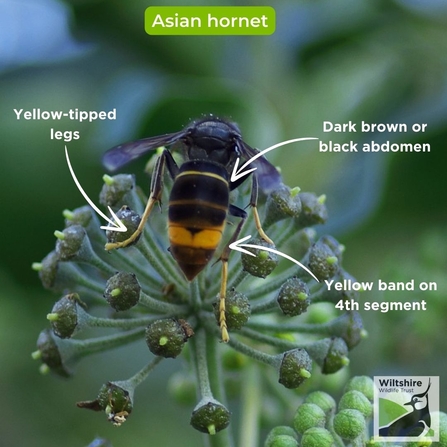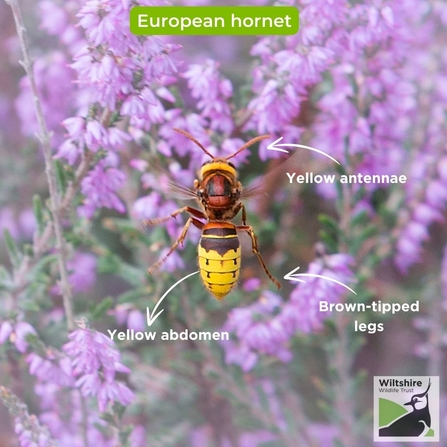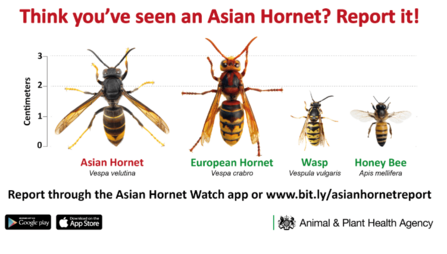Over 2,000 plants and animals have been introduced to Britain from other parts of the world. These are known as non-native species. Most are harmless, but around 10-15% spread and become invasive non-native species which harm wildlife and the environment, are costly to the economy and can even impact our health and way of life.
One species of high concern is the Asian hornet, which is threatening our native insects. The Asian hornet is one of 19 invasive species which are currently on alert due to the damage they can do to native wildlife. They are a predator to the majority of our pollinators, including honeybees, with one of their nests consuming 11kg of insects in one year. They have no natural predator in the UK, so their numbers can easily increase if not controlled, presenting a huge risk to Wiltshire’s insect population. They also present a health risk to those who have allergies to hornet or wasp stings.
The Asian hornet first arrived in France in 2005, after being transported inside a container of pottery from China, and has altered the biodiversity there as a result. It spread rapidly throughout the 12 neighbouring European countries including the UK, where a number of sightings have been recorded since 2016. Last year in 2023, there were 72 nests found in 56 locations across the UK, which is more than the past 6 years combined. This year, sightings have already been recorded in Kent. This is a pivotal moment – we need eyes on the ground everywhere across Wiltshire to spot Asian hornets. Please be extra vigilant!




